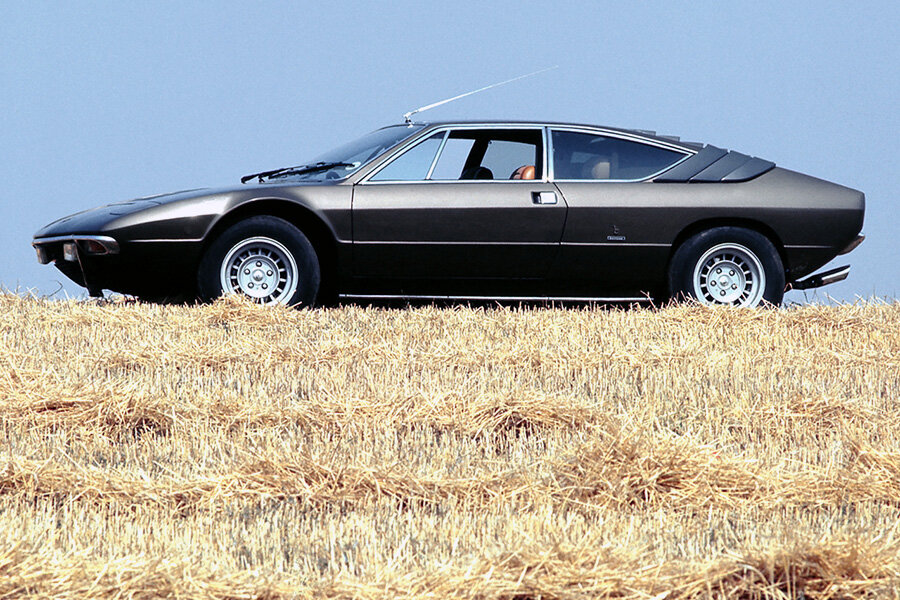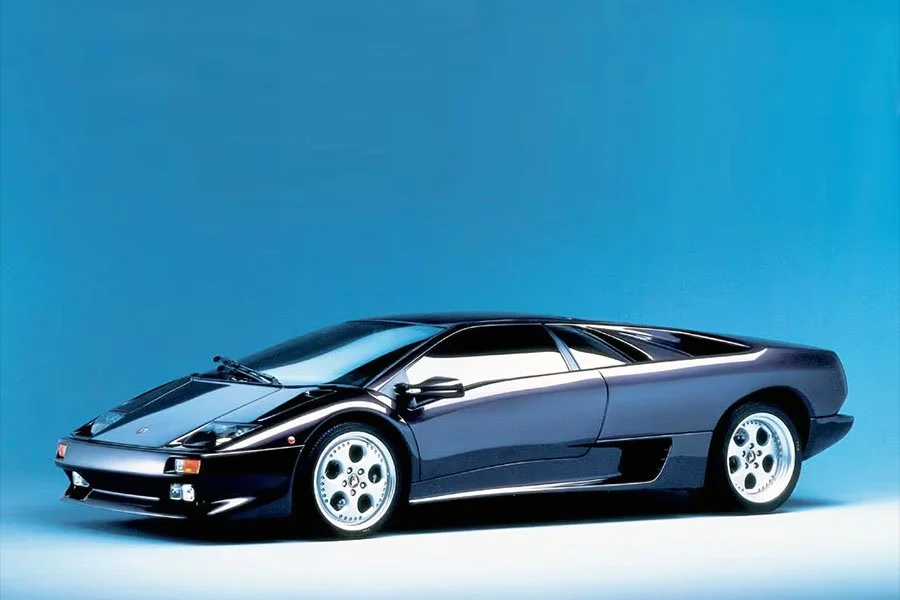Guide: Betting Big - a Historical & Technical Appraisal of the Lamborghini Urraco P250
/BACKGROUND
Ferruccio Lamborghini had always hoped to produce a junior model with a comparatively small engine that could sell by the thousands every year. Such a vehicle would complement his flagship V12s that typically sold a few hundred units per annum at best.
By 1968, production of the sensational new Miura and Espada models was in full swing; the time was right for an ambitious expansion.
The plan was to establish Lamborghini as a Latin version of Porsche whose 911 had reached dizzyingly high production numbers.
Greater sales volume would in turn bring Lamborghini the stability it needed as, despite a short history, the firm were already prone to suffering big disparities in annual output.
Inspired by the 911’s success, Lamborghini’s all-new Urraco would be marketed as a 2+2 with a pair of small rear seats. However, whereas the 911 was rear-engined with a naturally spacious cockpit, Lamborghini would attempt to accommodate the four-seat layout into a mid-engined design.
They would not be the only Italian firm to try this; around the same time, Ferrari and Maserati were respectively developing the Dino 308 GT4 and Merak.
To produce the Urraco and handle its anticipated sales volume, Ferruccio Lamborghini approved a major expansion in factory tooling and floorspace. A brand new V8 engine was also created.
As the company’s head of engineering, Gian Paolo Dallara, had recently left the company, Paolo Stanzani took control of the Urraco’s design.
In keeping with Lamborghini tradition this latest car was named after a fearsome bull breed; an Urraco bull had killed Manolete, the most celebrated Spanish bullfighter of all time.
CHASSIS
A new steel monocoque with a 2450mm wheelbase was created. It would house the engine transversely like the Miura.
Suspension was all-independent via MacPherson struts, coil springs and telescopic shocks. Anti-roll bars were installed at both ends.
Each axle ran a separate hydraulic brake system with 278mm ventilated Girling discs.
The five-bolt cast magnesium wheels were designed by Campagnolo. They measured 7.5 x 14-inches and originally came shod with Michelin XWX tyres.
An 80-litre fuel tank was installed in the engine bay.
ENGINE / TRANSMISSION
To power the Urraco, Lamborghini needed a brand new engine.
They settled on a 2.5-litre V8 that was designed to be easier to maintain, use and construct than the Giotto Bizzarrini-designed V12. It also had to be adaptable to future Federal emissions legislation in North America (the single most important marketplace for high performance European manufacturers).
The Paolo Stanzani-designed Tipo L240 motor was an all-alloy 90° V8 with single overhead camshafts and two valve cylinder heads. Ignition was via two Marelli coils and a single Marelli distributor.
Displacement was 2463cc thanks to a bore and stroke of 86mm and 53mm respectively.
Compression was set at 10.5:1 and there were normally four twin choke Weber 40 IDF 1 downdraught carburettors installed. However, some cars came with Solex C40P117s.
Peak output was 220bhp at 7500rpm and 166lb-ft at 5750rpm. This translated to 89bhp per litre, which exactly matched the Miura V12.
Transmission was via an in-house five-speed all-synchromesh manual gearbox with single dry-plate clutch and Lamborghini differential.
BODYWORK
As Bertone’s Marcello Gandini had already designed bodywork for the Miura and Espada, he was the obvious choice for the Urraco.
Gandini took a less controversial, more conservative approach with the new model, no doubt in an attempt to attract as many customers as possible.
He created a soft wedge design that was arguably better looking than the Ferrari Dino 308 GT4 and Maserati Merak. It contained many popular design features of the early 1970s to include retractable headlights, a raised tail fascia and fastback cabin.
Black slatted vents were located above the engine cover. They also wrapped around to the sail panels thus giving the Urraco one of its most distinctive features.
Chrome was initially used for the window frames, door catches, radio antenna, bumpers and the decorative trim that ran along the base of each sill.
INTERIOR
Inside, the full width dash was given a natural aluminium fascia. A rev counter was located at the extreme left of the instrument binnacle and a speedometer was at the extreme right. Both were angled inwards towards the driver with the supplementary gauges positioned centrally.
Various rocker switches were unusually located on the lower portion of the main binnacle.
The original leather-rimmed steering wheel was also unconventional; it had a deep dish and four arced horizontal spokes. This quirky design was soon replaced by a more traditional three-spoke rim.
A central console linked the dash to the transmission tunnel and housed both the ventilation controls and two large fresh air outlets. Three additional outlets were located on top of the dash.
Electric windows were standard. The switches were mounted behind the gear lever.
The dash, centre console and transmission tunnel were normally upholstered in mouse-hair type alcantara. Seat centres and door panel centres were usually fabric; they were often colour-coded to the paint scheme.
Sometimes the transmission tunnel and centre console were trimmed in leather to match the seat bolsters and outer door panels. Occasionally, full leather upholstery was specified for everything but the dash.
WEIGHT / PERFORMANCE
A 42/58 front/rear weight distribution was achieved and the Urraco tipped the scales at 1300kg.
It had a top speed of 149mph and 0-62mph time of 6.7 seconds.
PROTOTYPE & PROBLEMS FOR AUTOMOBILI LAMBORGHINI
A prototype Urraco was displayed at the Turin Motor Show in November 1970 and garnered a very favourable response. However, the new car was far from production-ready and the design team hadn’t counted on there being such an abundance of development work still required.
Problems were mounting for Ferruccio Lamborghini.
Neither the Urraco or the Countach was ready for production and a worldwide financial crisis was beginning to take hold. His tractor company was also in big trouble and trade unionised staff could no longer be laid off.
With things beginning to bite, in 1972, Ferruccio Lamborghini sold his tractor company to SAME and 51% of Automobili Lamborghini to Swiss industrialist, Georges-Henri Rossetti.
PRODUCTION BEGINS
Urraco deliveries finally began in November 1972, but production fell significantly short of the anticipated 1000 units per annum.
Ominously, in the first full year of production (1973) when the Urraco had its best twelve month sales period, Lamborghini achieved barely a quarter of their anticipated target and built just 285 cars.
OIL CRISIS
To further compound problems, the energy crisis hit at the end of 1973 when Arab OPEC members announced an embargo on oil sales to the USA, UK, Canada, Japan and the Netherlands.
The embargo was in response to the USA's support for Israel in the Yom Kippur War, where Egypt and Syria (with the support of other Arab nations) had begun a military campaign to regain Arab territories lost during the 1967 Six Day War (when Egypt, Syria and Jordan had been the aggressors).
Oil prices rose exponentially and remained at elevated levels for the next two years.
FERRUCCIO LAMBORGHINI DEPARTS
In 1974, Ferruccio Lamborghini sold the remaining 49% stake of his auto maker to Rene Leimer, a friend of Georges-Henri Rossetti.
URRACO P300, P200 & PIII
In November 1974, a revised three-litre Urraco P300 was launched at the Turin Motor Show. It most notably featured a three-litre version of Stanzani’s V8 engine complete with dual overhead camshafts.
Unveiled alongside the P300 at Turin was a two-litre Urraco with a de-bored version of the P250 engine. The Urraco P200 was a domestic market variant designed to take advantage of the tax breaks afforded to vehicles of under two-litres.
Although Stanzani’s V8 had been commissioned with a view to being easily Federalised for sale in the USA, it soon became clear that meeting North American emissions legislation would be prohibitively expensive.
The Urraco’s only foray into the US was a batch of around 20 modified P250-based PIIIs fitted with 200kg of emissions equipment which reduced output to a meagre 180bhp.
END OF PRODUCTION
Production of the Urraco P250 continued until 1976, by which time 520 had been completed.
During this time, only a handful of minor updates were made. The bumpers, wipers and windows frames were gradually switched to anodised black instead of chrome and a more conventional three-spoke steering wheel was introduced.
Text copyright: Supercar Nostalgia
Photo copyright: Lamborghini - https://www.lamborghini.com


































